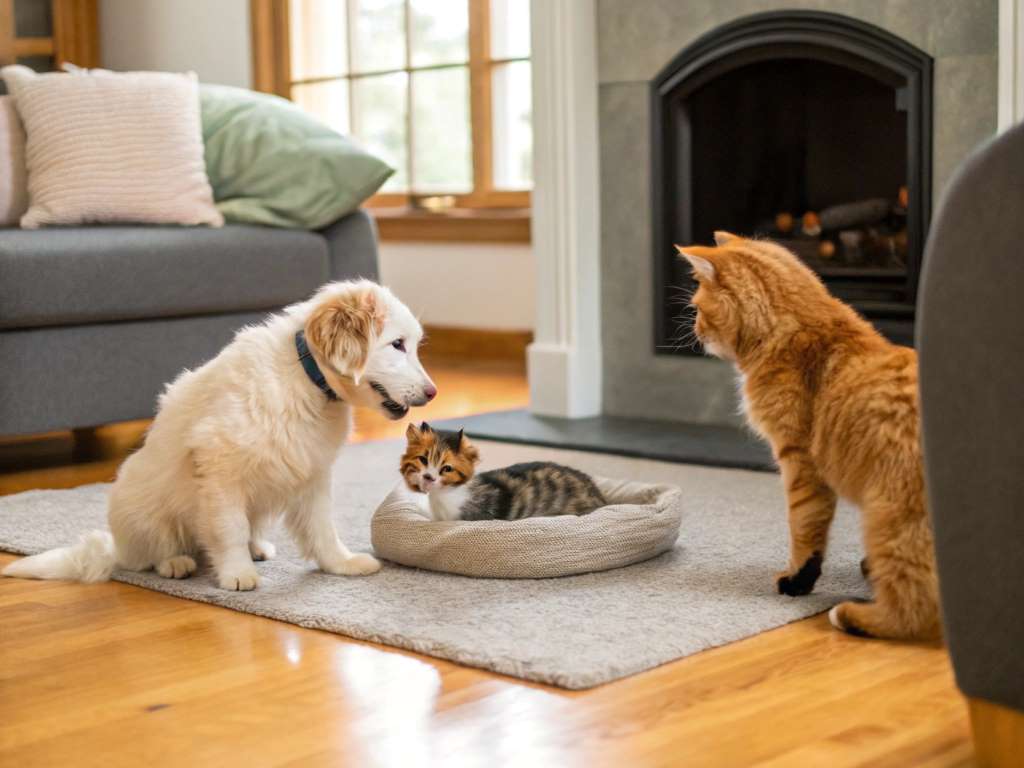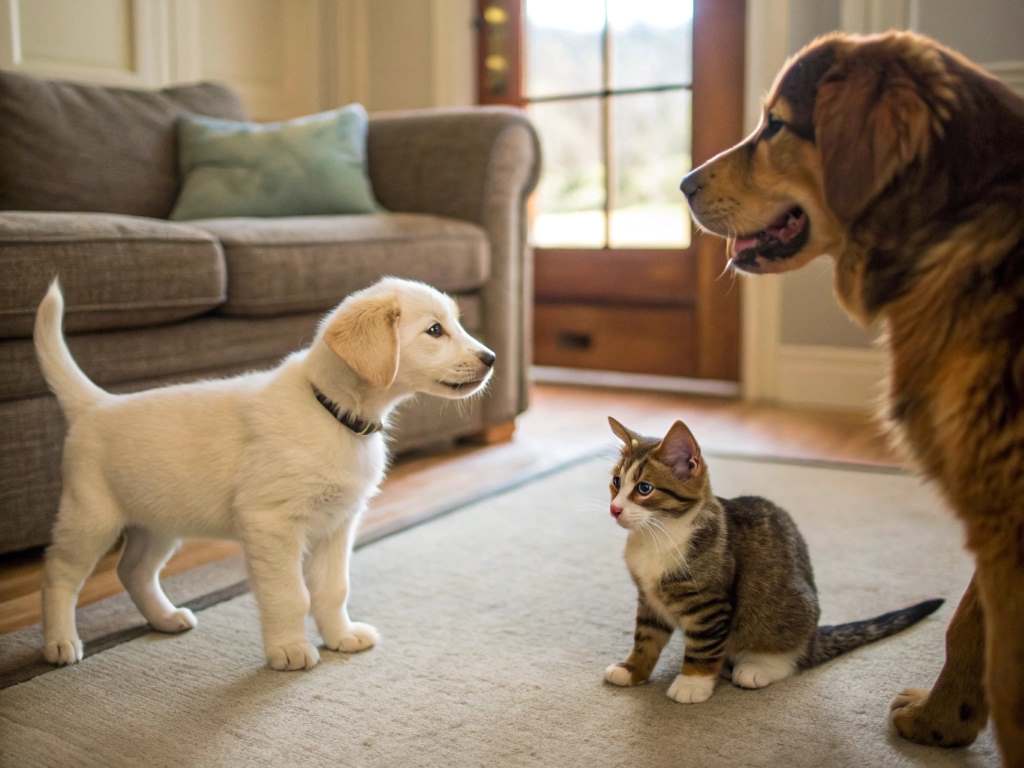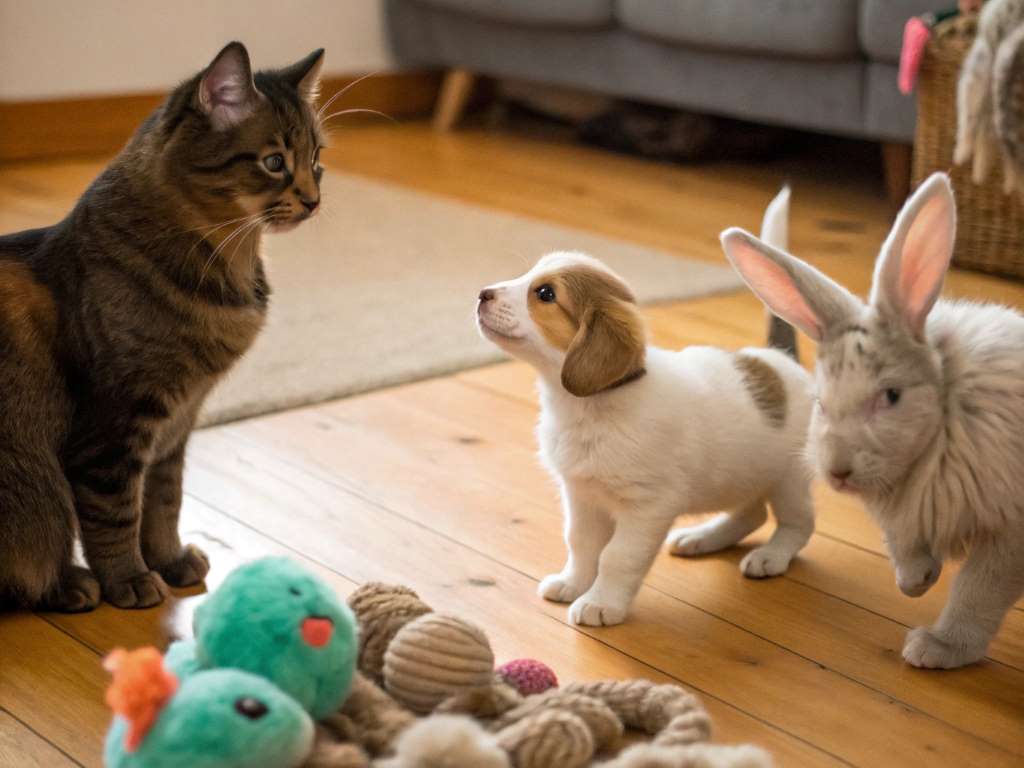
Introducing a new pet to your home is like adding a new character to a beloved story. It’s exciting but can stir up tension among your existing furry friends. I remember bringing home my kitten, Luna, to meet my dog, Max. The first day was chaos—hisses, barks, and a lot of uncertainty. But with patience and a plan, they became best buddies. If you’re wondering how to introduce a new pet to existing pets, you’re in the right place. This guide shares 10 practical, heartfelt tips to make the transition smooth, ensuring your home remains a happy haven for all your pets. Let’s dive into creating a peaceful introduction.
Table of Contents
TogglePreparing Your Home for a New Pet
Before your new pet arrives, set the stage for success. Create separate spaces for each pet to feel secure. For example, give your new cat a room with a litter box, food, and toys, while your dog keeps their usual spots. This reduces territorial stress. According to a 2023 study by the American Veterinary Medical Association, 70% of pet conflicts stem from resource competition. So, stock up on extra bowls, beds, and toys to avoid disputes.
Additionally, check your home for safety. Hide cords, secure trash cans, and remove toxic plants. When I brought Luna home, I forgot about a dangling cord—luckily, Max didn’t chew it! If you’re considering whether to let your cats indoors or outdoors, ensure that the environment is safe for exploration. Introducing calming aids like pheromone diffusers can help ease anxiety, especially during transitions. Preparing thoughtfully builds a foundation for harmony.
Understanding Your Pets’ Personalities
Every pet has a unique personality. Your current pet might be a social butterfly or a grumpy loner. Observe their behavior to predict how they’ll react. For instance, Max, my dog, loves company but gets jealous easily. Knowing this helped me plan Luna’s introduction. Similarly, assess your new pet’s temperament. Is the new cat bold or shy? A 2021 study by the ASPCA found that mismatched pet personalities increase conflict by 40%.
Therefore, tailor your approach. Pair a shy pet with gradual introductions and a bold one with supervised meetings. Watch body language—tail wags or flattened ears reveal their mood. Understanding their quirks ensures you’re not forcing an uncomfortable matchup, making the process smoother.
Starting with Scent Introduction
Pets rely heavily on smell to recognize others. Before a face-to-face meeting, swap scents to familiarize them. Rub a cloth on your new pet and place it near your existing pet’s bed, and vice versa. When I did this with Luna and Max, Max sniffed the cloth curiously, which calmed him before meeting Luna.
Moreover, mix their environments gently. Let your new pet explore a room your current pet uses, then switch. This indirect contact builds familiarity without confrontation. Be patient—rushing this step can spark aggression. Over a week, increase scent exposure. This method mimics how animals in the wild learn about newcomers, creating a sense of normalcy.
Planning the First Face-to-Face Meeting
The first meeting is a big moment. Choose a neutral space, like a hallway, to avoid territorial disputes. Keep pets leashed or in carriers for control. For Luna and Max, I held Luna in a carrier while Max sniffed from a distance. Stay calm—pets pick up on your emotions.
Furthermore, keep it short, about 5-10 minutes. Reward calm behavior with treats. If tensions rise, separate them and try again later. Gradually increase meeting times over days. Patience here prevents fights and builds trust. A rushed introduction can set back progress, so take it slow for lasting peace.
Supervising Early Interactions
Once pets meet, supervision is key. Never leave them alone together until you’re sure they’re comfortable. Watch for signs of stress, like growling or hiding. When Luna started swatting at Max, I distracted them with toys to diffuse tension. Always have an escape route, like an open door, for the new pet.
Additionally, set boundaries. Use baby gates to separate spaces if needed. Reward positive interactions with praise or treats to reinforce good behavior. Early supervision shapes their relationship, reducing the risk of fights. It’s like refereeing a game—stay alert, and everyone plays fair.
Common Mistakes to Avoid
Introducing pets isn’t always smooth. Here are common pitfalls to dodge:
- Rushing the process: Forcing pets to meet too soon causes stress.
- Ignoring body language: Missing signs like growling can lead to fights.
- Favoring one pet: Unequal attention breeds jealousy.
- Skipping scent introduction: Pets need time to adjust to new smells.
- Neglecting separate spaces: Shared resources spark competition.
- Leaving pets unsupervised: Early fights can ruin their bond.
Avoiding these mistakes keeps the introduction peaceful and stress-free.
Establishing a Routine for Harmony
Pets thrive on routine. After introductions, create a schedule for feeding, playtime, and rest. Feed pets in separate areas to prevent food aggression. For Luna and Max, I fed them on opposite sides of the kitchen. Consistent routines reduce anxiety and establish boundaries.
Moreover, balance attention. Spend equal time with each pet to avoid jealousy. If one pet dominates playtime, redirect focus to the other. A predictable routine helps pets feel secure, fostering cooperation. Over time, they’ll adjust to sharing their home, just like Luna and Max learned to share the couch.
Using Positive Reinforcement
Positive reinforcement works wonders. Reward pets for calm, friendly behavior with treats, praise, or play. When Max sat quietly near Luna, I gave him a treat, encouraging more of that behavior. This builds positive associations with the new pet’s presence.
However, don’t punish negative actions like hissing. Instead, redirect with toys or separate them briefly. Consistency is key—reward every small step toward friendship. Over weeks, these rewards shape a strong bond. It’s like training a child—celebrate the wins, and they’ll keep trying.
Handling Conflicts and Setbacks
Conflicts happen. If pets fight, separate them immediately without yelling. Check for injuries and give them space to cool off. When Luna scratched Max, I separated them for an hour, then reintroduced them slowly. Identify triggers, like a favorite toy, and remove them.
Additionally, consult a vet or behaviorist if conflicts persist. They can spot health issues or suggest training. Don’t lose hope—setbacks are normal. With time, most pets adjust. Staying calm and proactive turns conflicts into learning moments, paving the way for peace.
Knowing When to Seek Professional Help
Sometimes, introductions don’t go as planned. If aggression continues for weeks or pets seem stressed, seek help. A certified animal behaviorist or vet can assess the situation. For example, if Max and Luna hadn’t bonded, I’d have called a behaviorist. Professionals offer tailored plans, like desensitization techniques.
Moreover, health issues can cause aggression. A vet can rule out pain or illness. Don’t wait too long—early intervention prevents lasting issues.
Conclusion
Introducing a new pet to existing pets is a journey of patience and love. From preparing your home to using positive reinforcement, these 10 tips create a harmonious household. My experience with Luna and Max taught me that time and care turn strangers into friends. By following these steps, you’ll help your pets build lasting bonds, making your home a joyful place for all. Ready to start this adventure? Share your pet introduction stories in the comments or spread the word by sharing this article!
FAQs
How long does it take for pets to get along?
It varies, but most pets adjust within 2-4 weeks with proper introductions. Patience is key.
Can I introduce a new pet if my current pet is aggressive?
Yes, but go slowly, use professional help, and monitor closely to ensure safety.
Should I let my pets fight to establish dominance?
No, separate them immediately. Fighting can cause injuries and worsen their relationship.
What if my new pet is scared of my existing pet?
Give the new pet a safe space and introduce them gradually to build confidence.
How do I know if my pets will never get along?
Persistent aggression after 6-8 weeks may need a behaviorist’s evaluation for solutions.


